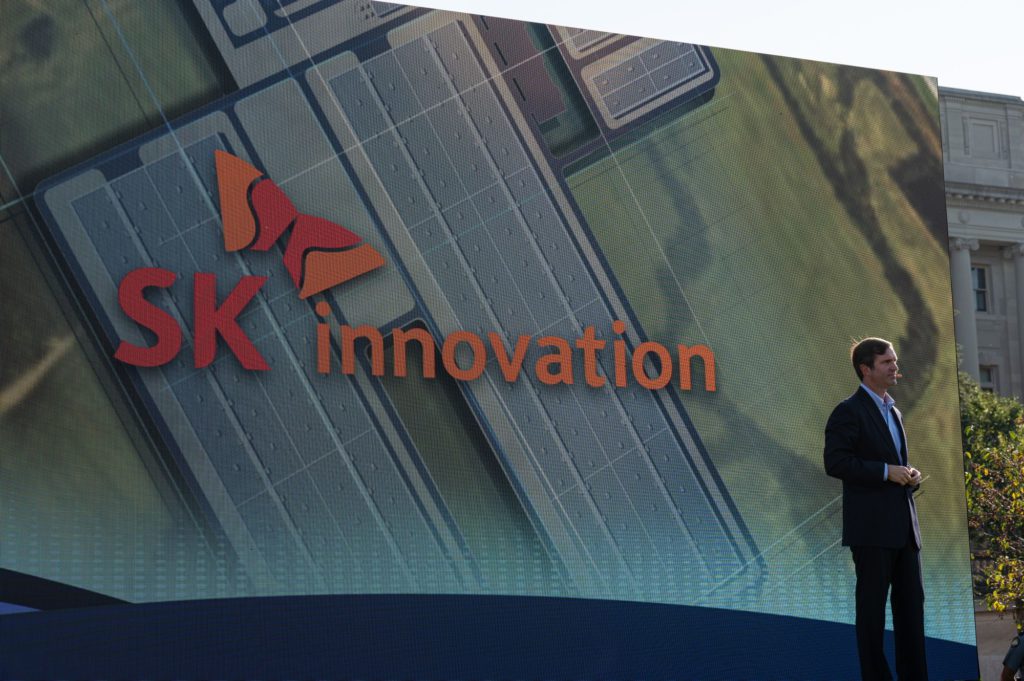(Bloomberg Businessweek) —
After Ford showed off the first F-150 Lightning electric pickups at its plant in Dearborn, Michigan, this week, I caught up with Bill Ford, the chair and founding family scion, and asked what I confessed was a geeky question: Where will Ford get all the lithium and other metals for the many electric vehicles the company plans to produce?
“It’s not a geeky question; it’s a good question,” Ford said. Echoing his crosstown counterpart, General Motors Chair Mary Barra, Ford said his company had secured enough supply of battery metals including lithium, cobalt and manganese to make 2 million EVs a year by 2026. But beyond that, the U.S. industry needs to grow a domestic business because America just plain doesn’t make enough of the raw materials that go into EV batteries.
Lithium is the biggest piece of the problem. The lightweight metal is essential to the lithium-ion batteries that power not only EVs, but iPhones and other contemporary devices. The element itself is plentiful, but there isn’t enough mining going on globally, and precious little production happens in the U.S.
Worse yet, the processing done to make lithium usable in battery cells is mostly done in China — about 80% of it, according to Piedmont Lithium, a startup pursuing lithium production in North Carolina. Automakers have similar concerns about nickel and cobalt, much of which happens to be sourced from geopolitical pariah Russia and the Democratic Republic of the Congo, where extraction has been linked to human rights abuses and environmental destruction.
Automakers have been taking or considering extreme measures to line up supply. Elon Musk recently tweeted that Tesla may have to enter the lithium mining and refining industry. GM’s Barra last year announced an investment in and joint venture with Controlled Thermal Resources to source lithium from California’s Salton Sea. Bill Ford said at the Lightning launch event that his company will look into similar deals, but those may take years to get to scale.
All of this is a big change for the incumbent carmakers. Tesla has emphasized its desire to be vertically integrated, meaning it handles or has a role in making components including batteries, chips and motors. Older carmakers have long outsourced more and more parts-making and raw material procurement to suppliers. The companies have pushed over decades to wring every bit of savings out of those partners, which has contributed to the manufacturing of key components moving to markets with lower-cost labor. Now, the industry is looking to in-source and re-shore production to build up a domestic battery sector.
Bill Ford said his company is in regular conversations with the federal government to foster mining and manufacturing of key battery materials. He said Ford has had conversations with the Biden administration and members of Congress to make it happen.
“Down the line, there is the whole supply base issue, not only in terms of raw materials but where are they going to be made,” Ford said. “Are we going to have a national effort to ensure that we have an American supply base for a lot of these things? As we think about infrastructure that needs to be built out and the supply base we’d like to have in America, it’s going to require some partnerships with federal and local governments.”
He’s right. U.S. automakers have fared worse during the chip shortage than their Japanese and Korean competitors, which have maintained a steadier supply to keep vehicle production going. Toyota managed to sell more cars in the U.S. than GM last year for the first time since 1931 and stayed ahead in the first quarter of this year.
For now, carmakers are at the mercy of a far-flung group of miners and suppliers that are racing to keep up with demand for electric vehicles. Prices are soaring: lithium alone has risen more than 200% since Tesla’s Model 3 first shipped in July 2017, notes Grayson Brulte, who consults carmakers on government affairs. Price hikes like that are surely setting off alarm bells in Dearborn and Detroit.
Like getting this newsletter? Subscribe to Bloomberg.com for unlimited access to trusted, data-driven journalism and subscriber-only insights.
More stories like this are available on bloomberg.com
©2022 Bloomberg L.P.











